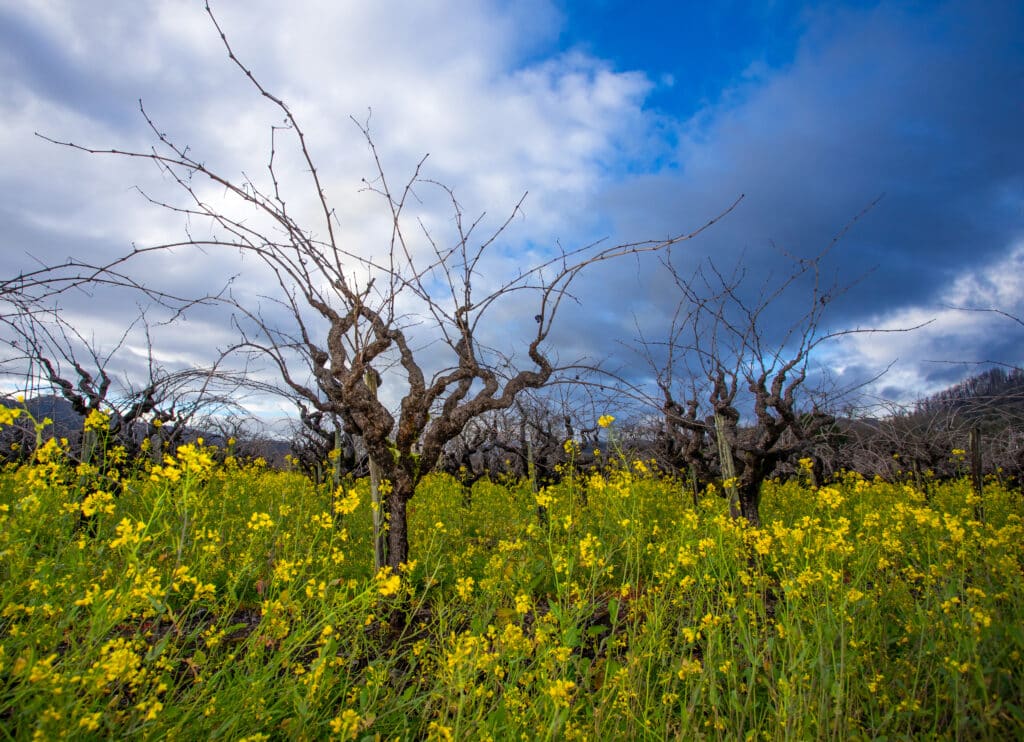The winter slumber of the vines is nearing completion as the days warm with the coming spring. Yet while the vines were at rest, our vineyards were teeming with life. Against the backdrop of gnarled vines is a carpet of color thanks to an integral part of our sustainable farming efforts – cover crop.
Vineyards, being a perennial crop, pull from the same soil year after year to produce the grapes we caringly turn into wine. In truth, however, a vineyard is a monoculture – a single crop grown in an extractive manner, that, if left unchecked, will exhaust the soil until the next replanting cycle (20 to 30 years for many conventional vineyards). As old vine preservationists, we work to keep vineyards in the ground for far longer than these conventional planting cycles – building resiliency and diversity into the vines and soils year upon year.

Critical to our farming strategy is cover cropping, which, in large part, helps us achieve the goal of preserving historic vines. Immediately following harvest, vineyards are prepared with compost and seeded for a cover crop. Cover crops, with their colorful blooms and extensive root systems, provide ample habitats for beneficial insects and soil microorganisms. The diverse ecosystem created is less susceptible to invasive or damaging pests, either through resource competition or predation, eliminating the need for chemical pesticides.
Below ground, the regeneration of soil nutrients, primarily nitrogen, is aided by plantings of legumes and clovers, allowing us to limit, or even eliminate, the application of additional fertilizers. These species, through a symbiotic relationship with rhizobia bacteria, affix atmospheric nitrogen to nodules on the roots of the cover crop. The nitrogen primarily aids the cover crop through its life cycle but, when tilled or mowed at budbreak, breaks down, releasing the stored nitrogen to the soil, making it available to the vines.
Soil structure can also be modified through the seeding of grasses with fibrous root systems such as ryegrass, barley, and oats. These grasses add water and air infiltration pathways to seasonally compacted soils. Vineyards with higher clay content also benefit from the inclusion of taproot species in the cover crop mix like Daikon radish. These taproots will disrupt hard clay pans and further open the soil structure. Tilling in or allowing these crops to decompose in the vineyard further increases soil organic matter content, a critical element of soil structure that facilitates the uptake of nutrients to the vines and increases water retention of the soil profile.
Importantly, by not having bare soils during the winter months we limit both wind and rain-induced erosion and runoff, preserving our topsoil. A cover cropped vineyard captures as much of the winter rains as possible – crucial for the season to come, as the vines will tap into this reservoir during the sunny and dry California growing season.
Working with several century-old vineyards, we know what treasures await us from aiding vines along into old age. Sustainable farming methods, with cover cropping at the center, help us reach this goal of continuing to produce delicious wines from the same vines for generations to come.